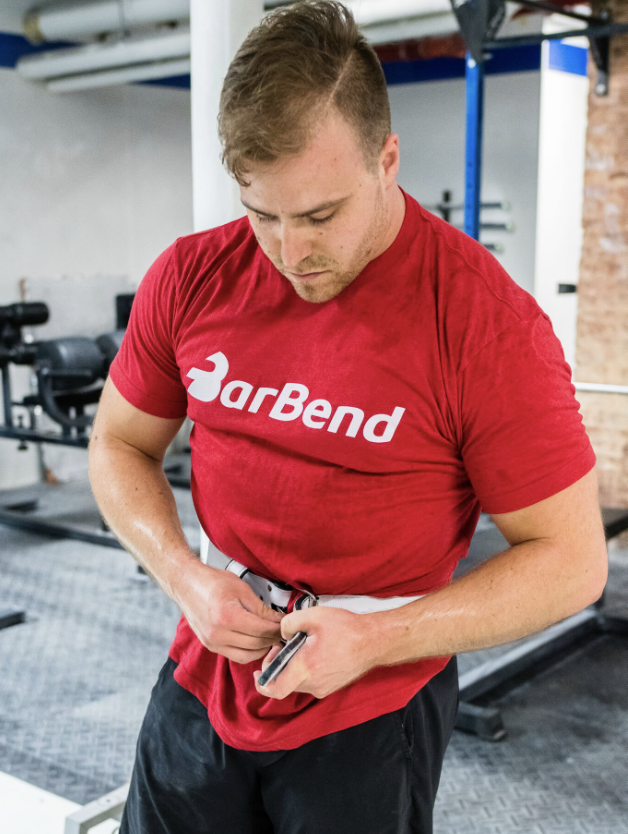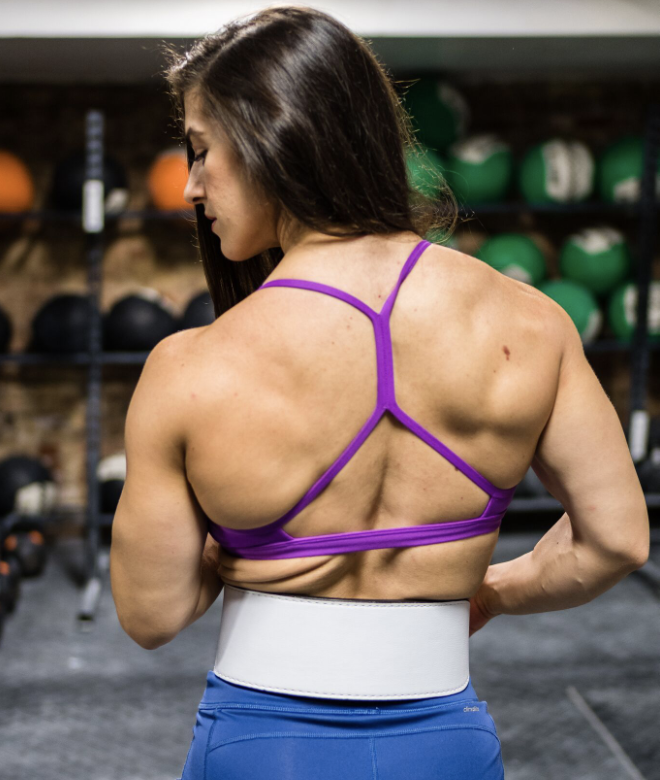When reaching for the best weight lifting belt in your gym bag, what exercises signal the need to use one? Are they movements that you feel a belt benefits, movements that warrant a belt’s use based off of what’s presented on social channels and the internet, or is it because of a previous injury? Regardless of the reason, a weight lifting belt can an awesome supportive strength tool, and finding the best belt for your needs can be very beneficial.
And while a weight lifting belt shouldn’t be used at all times, it can be incredibly useful knowing when to grab one and what exercises most likely warrant a belt’s use most. Generally, the bigger movements (squats, deadlifts, clean & jerks, etc) that create a lot of demand on the body will be accompanied with the use of a belt.

This article isn’t intended to make clear cut rules to say that a belt should always be worn for the exercises below, but to build a list of common exercises that often facilitate a belt’s use. In fact, we’re big fans of beltless squat and deadlift training, yet we’re also fans of keeping everyone safe and providing general ideas to build one’s gym knowledge.
Why Use a Weight Lifting Belt?
For starters, it’s probably a good idea to understand why an athlete uses a weight lifting belt in the first place. There are multiple reasons why an athlete will reach for one or a coach will instruct an athlete to wear a belt and we’ve listed a couple of the biggest reasons below.
1. Injury Prevention and Bracing
Potentially the biggest and most common reason for using a belt is injury prevention. A weight lifting belt can help a lifter maintain their neutral torso positioning void of excessive [lumbar] flexion, which is what most describe as “proper” form. Injuries when lifting can occur when the lumbar spine (lower back) is loaded heavily in a flexed position. This isn’t always the case when the spine moves into flexion, but it’s the movement that most associate with injuries that a belt can help prevent.
A lifting belt’s ability to help athletes maintain a neutral torso is by assisting them create intra-abdominal pressure. This is the act of creating pressure throughout the torso by bracing, which essentially serves as our body’s means of creating a “natural” belt. A study published in 1992 from the Medicine and Science In Sports Exercise Journal suggested that wearing a belt during the back squat exercise helped athletes increase their force output and intra-abdominal pressure, which in this case could suggest the safety of the back (1).

Can a lifting belt fully prevent injuries? Of course not, and sometimes injuries will happen regardless of precautions taken, but they can certainly help support an athlete’s form and mental bracing cues to increase safety.
2. Competition and Max Lifts
Another reason a belt can be used in the gym is for competition purposes and max lifting attempts. If you’re a strength athlete prepping for a meet, then more than likely you’re already well aware of the rationale for wearing belt. Typically, lifters in this setting will wear a belt for a few reasons, which include:
- Training Stress: Displace stress induced from heavy training and high volumes. Beltless training is great, but in competition prep recovery should be a major focus, so a belt can assist with how much work one can endure. This also can play true for bodybuilders who have extremely long work outs.
- Acclimation: More than likely, a belt will be used in one’s meet, so wearing one in the gym can help athletes get used to wearing a belt. At times, a belt can cause a slight shift in form as suggested from this study published by the Journal of Strength and Conditioning Research, (2) so getting used to it prior to competition can be a major help for performance transfer.
- Mental & Physical Cues: This point was discussed above, but a lifting belt can be incredibly useful for providing both physical and mental feedback to an athlete for cues. For example, the act of feeling a tight belt around the torso can help an athlete brace and press against it.
Strength Sports and Types of Lifting Belts
For this section, we’ll briefly discuss why various athletes might reach for a lifting belt and their various forms. Reasons can vary between each example provided below, but what’s provided below are basic reasons why someone like a bodybuilder, powerlifter, and so forth will use a belt in training.
- Powerlifting (Lever Belt): Support during maximal bouts in competition and training with the squat, bench press, and deadlift.
- Bodybuilding (Tapered Belt): Long duration training that requires ample focus on the mind muscle connection, so a belt can assist with supporting this and form fit the body for comfort better.
- Strongman (Wider Leather/Nylon Belt): Support in movements such as deadlifts, log lifts, heavy presses, carries, and stone lifts.
- Weightlifting (Tapered/Nylon Belt): Support for the clean & jerk, snatch, and squats in training. A tapered design will ensure mobility isn’t hindered in these movements.
Lifts That a Lifting Belt Is Used to Support
Below, we’ll provide five exercises that lifters will often use a weight lifting belt for, along with rationale for doing so. Again, the examples below are only a few of the exercises that both athletes and recreational lifters will use a belt.
1. Back & Front Squat
The squat, aka the king of all lifts. This is a common exercise for a belt due to the potential of forward torso flexion during both the ascent and descent, especially in the front squat and low-bar squat. A belt can help facilitate bracing to ensure proper mechanics and for form to be carried out safely during the movement.
2. Deadlift
The deadlift is another compound movement a belt is often used for, and a majority of this rationale is for one’s safety. Since the deadlift involves picking up a dead weight from the ground, then torso flexion should be carefully paid attention. A belt can help support injury prevention and bracing cues.

3. Clean & Jerk
The clean & jerk is another movement that athletes will utilize a belt for. This movement requires an athlete to maintain an upright torso (more so than the squat), while catching a weight that’s crashing down on them. A belt can help provide an additional level of support at both the bottom and the ascending portion of the clean & jerk.
4. Barbell Rows
Rows are similar to deadlifts in respects to how one is moving weight from the ground to upwards toward the body, but are slightly more dynamic. For this reason, a belt can be beneficial for ensuring safety when form may break down slightly, and can increase the amount of work one can do with this movement.
5. Bench Press
Wait, the bench press? Yes, the bench press can also be an unconventional movement athletes will use a lifting belt for. A belt for the bench press can assist with bracing for the eccentric load, and also ensure there’s not excessive arch taking place in the lumbar when attempting maximal loads (this is most applicable to powerlifters).
Wrapping Up
Lifting belts can be useful tools for multiple reasons in the gym. Whether you’re a competitive strength athlete or a recreational lifter the best thing you can do is to equip yourself with knowledge on when and how to wear a lifting belt. Is a belt a must for gains? No. Will a belt completely prevent injuries? Absolutely not. Yet, a belt can be an incredibly useful tool to keep on hand at all times.
References
1. Lander JE, e. (2018). The effectiveness of weight-belts during multiple repetitions of the squat exercise. – PubMed – NCBI . Ncbi.nlm.nih.gov. Retrieved 9 October 2018, from https://www.ncbi.nlm.nih.gov/pubmed/1533266
2. Zink AJ, e. (2018). The effects of a weight belt on trunk and leg muscle activity and joint kinematics during the squat exercise. – PubMed – NCBI . Ncbi.nlm.nih.gov. Retrieved 9 October 2018, from https://www.ncbi.nlm.nih.gov/pubmed/11710410